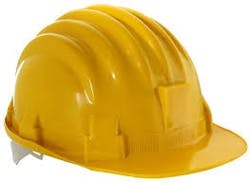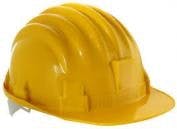Even Female Engineers Would Wear Hard Hats
The article covered young female apprentices working to upgrade the Heysham nuclear power station. According to Stephen Harris of The Engineer magazine, the article helped dispel stereotypes about the kinds of jobs women enjoy or can do. Yet industry people often criticize these kinds of articles as sending the wrong message.
For example, readers complained that the young women featured were in “trade” and not “technical” apprenticeships because they were learning to weld. This continued into a discussion about how bad it is for the profession’s image that all the photos in the article were of women in hard hats.
I worked on the factory floor of a large Tier One automotive company for years. There, neither employees in the trades nor engineers were required to wear hard hats. (Of course, I'm sure this depends on the industry. Engineers on the field in Oil & Gas, for example, would typically wear hard hats because of the more dangerous conditions.)
The tradesmen were very good at tasks such as welding and fixing production machines. Most were very mechanically and technically skilled. The engineers had a different set of smarts, if you will, based on their knowledge of engineering principles. Also, their jobs tended to be way less physically demanding.
That said, in general, "hard hat" does seem to connote dirty work boots and greasy uniforms, so depicting women in hard hats to connote "engineering" might deter some. In my experience though, women in technical jobs on the plant floor love the relatively high pay and relish the challenges of the jobs. They would probably tell their younger sisters interested in engineering to look past the hard hat image.
However, to be on the safe side, it might be wise for industry to create a different or more modern representation of "engineering."
It can be seen that arguments like this don't always have black or white answers. For instance, as author of the article reports, welding isn’t the same as engineering, yet the main female featured in the story began by learning the trade and is now a project engineer.


